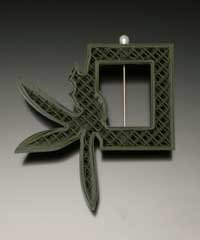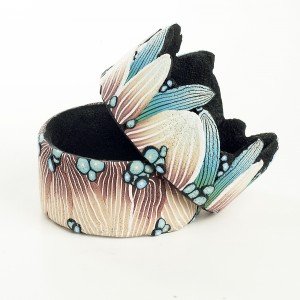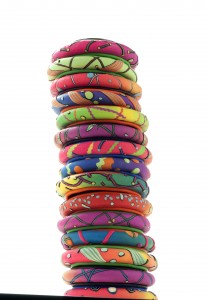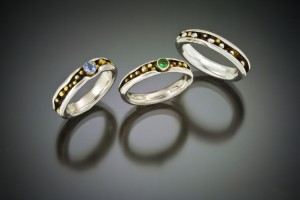Naturally when you think of marketing your production line you have to figure out how to reach that market. You can get your jewelry directly to the wearer by selling it to her (or him) directly, through retail sales. You might also wholesale your work–sell to an intermediary who marks it up and then presents it to potential buyers. You can even do both. Whatever choices you make are going to affect the venues at which you sell your product, the support materials you need, the price point, and even may affect the product itself. Let’s look at retailing first.
Most jewelry makers start their careers by selling directly to friends, family members co-workers—the people who will wear their jewelry. When you want to step it up, you’ll want to move on to one—or several—of the venues open to retails sales of handmade craft jewelry. And there are lots of them. They include online venues, such as your own website or a marketplace such as Etsy, or face-to-face venues, such as home parties, street fairs, pop-up boutiques, co-op galleries, charity shows. But some of the most popular places to sell artisan jewelry are local, regional, or national art and craft fairs.
Retail shows are great places to sell production work. People who attend shows are usually open to being engaged by the unusual or whimsical. They are looking for something special, something that “speaks” to them. In addition, customers at shows are often predisposed to buy something. Because show visitors usually buy on impulse, you have a better chance of making a sale if your appealing product has an affordable price tag. And affordable and appealing is exactly what your production artisan jewelry should be.
Don’t leave your one-of-a-kind pieces at home, however. While your production line provides steady sales, you might find yourself selling your more expensive, one-of-a-kind pieces as well simply because you are on hand to explain your work and make a personal connection to the customers.
Unique or limited edition work sells best when the customer can talk directly to the artist. Customers at art and craft fairs want to hear your story. It is what makes your jewelry personal to them.
As you tell your story, and explain why the work is unique, you begin building rapport with the buyer. This builds trust–which makes shows a great place to take custom orders, too.
Retailing at shows involves expenses and planning. First, you have to forecast how much work you’ll need to take with you and invest in the cost of materials. There will also be the costs of travel—gas or airfare, hotels, and food, if you’re going far. You’ll need cases, signage and lighting. You’ll want insurance if you have concerns about theft. There are booth fees and commission fees to the show sponsor. Many shows are held outside so there is always the chance of being rained out, or unseasonably hot weather.
But selling retail can be exciting. You get to talk directly to people who love your work enough to buy it. It’s also a great way to get feedback on the work—what customers like or don’t like, what sells and doesn’t sell and to what audiences. All information you need to alter, improve or target your work more closely to your audience.
Like this:
Like Loading...







